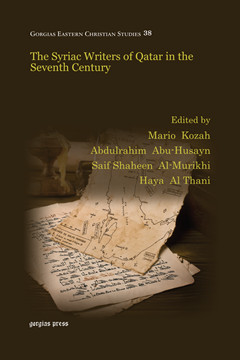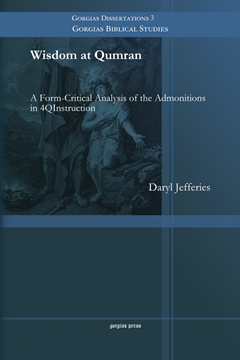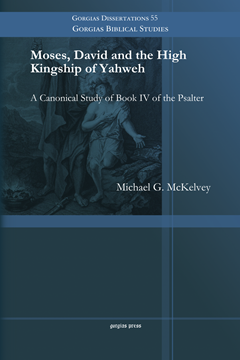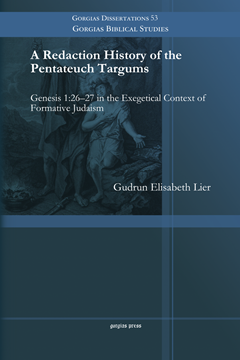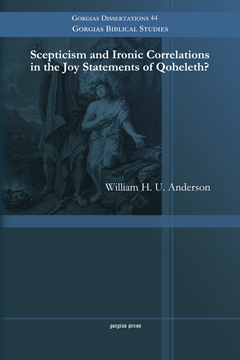The Syriac Writers of Qatar in the Seventh Century
Series: Gorgias Eastern Christian Studies 38
ISBN: 978-1-4632-0355-9
The Syriac writers of Qatar themselves produced some of the best and most sophisticated writing to be found in all Syriac literature of the seventh century, but they have not received the scholarly attention that they deserve in the last half century. This volume seeks to redress this underdevelopment by setting the standard for further research in the sub-field of Beth Qatraye studies.
$25.00 (USD)
Central Sanctuary and Centralization of Worship in Ancient Israel
From the Settlement to the Building of Solomon's Temple
Series: Gorgias Near Eastern Studies 6
ISBN: 978-1-4632-0368-9
This book provides the first major reinvestigation and reinterpretation of the history of centralization of worship in ancient Israel since de Wette and Wellhausen in the nineteenth century. Old Testament scholarship has thus far relied on the consensus that the book of Deuteronomy is the product of late monarchic Judah (7th century BC). Pitkänen places the biblical material in its archaeological and ancient Near Eastern context and pays special attention to rhetorical analysis. The author suggests that the book of Joshua, as well as its sources (such as Deuteronomy) may have originated as early as before the disaster of Aphek and the rejection of Shiloh.
$127.00 (USD)
Wisdom at Qumran
A Form-Critical Analysis of the Admonitions in 4QInstruction
Series: Gorgias Biblical Studies 3
ISBN: 978-1-4632-0369-6
This study provides background on wisdom forms, the key Qumran sectarian texts, and wisdom studies related to the Dead Sea Scrolls. 4QInstruction includes poetic discourses, hymnic material, and short wisdom sayings and admonitions. A major focus is placed on the admonitions, which are discussed in terms of their structure, wisdom forms, and setting. The admonitions are expressed in biblical wisdom forms, showing a familiarity with and acceptance of traditional Hebrew wisdom, including a focus on traditional themes. Yet, when read from the sectarian perspective, 4QInstruction reinforces the guidelines and theology of the key Dead Sea Scroll documents.
$114.00 (USD)
Moses, David and the High Kingship of Yahweh
A Canonical Study of Book IV of the Psalter
Series: Gorgias Biblical Studies 55
ISBN: 978-1-4632-0370-2
Has the Old Testament Psalter been purposefully arranged? Does this arrangement convey an overall message? This book enters into the growing discussion regarding the canonical arrangement of the Psalms by examining Book IV (Pss 90-106) and considering the book's overall theological and thematic message within the literary context of the Psalter. This volume argues that Psalms 90-106 have been purposely arranged as a rejoinder to the previous three books, in response to the rise and fall of Davidic kingship. This hypothesis is tested by examining how Psalms 90-106 may have been purposely organized as a collection.
$122.00 (USD)
A Redaction History of the Pentateuch Targums
Genesis 1:26–27 in the Exegetical Context of Formative Judaism
Series: Gorgias Biblical Studies 53
ISBN: 978-1-4632-0371-9
This volume combines Targum studies with Judaic studies. The author assigns different Targums each to a respective particular “Sitz im Leben”, stressing the close connection between Targum and Midrash literature. She challenges the assumption that all extant Targums were compiled for the Synagogue. Instead, she suggests that Targum Onqelos might have fulfilled a function in the context of the early beth din and demonstrates that Pseudo-Jonathan can be linked with the rhetorical practices which abounded in later amoraic, educational circles.
$105.00 (USD) $63.00 (USD)
Scepticism and Ironic Correlations in the Joy Statements of Qoheleth?
Series: Gorgias Biblical Studies 44
ISBN: 978-1-4632-0372-6
This book is a response to the popular counter-reading of Ecclesiastes in the 1980s and 90s as a book of “joy” (rather than a pessimistic book). It examines the seven “joy statements” of Qoheleth in the light of analogies with scepticism and the literary form of irony. Irony, like scepticism, has the function to induce doubt and questions. The joy statements of Qoheleth are likely analogous to expressions of complex irony—whereby what is said is both meant and not meant. This examination highlights the complexity of the biblical book—while demonstrating how unlikely the “joy reading” may be.
$80.00 (USD)
